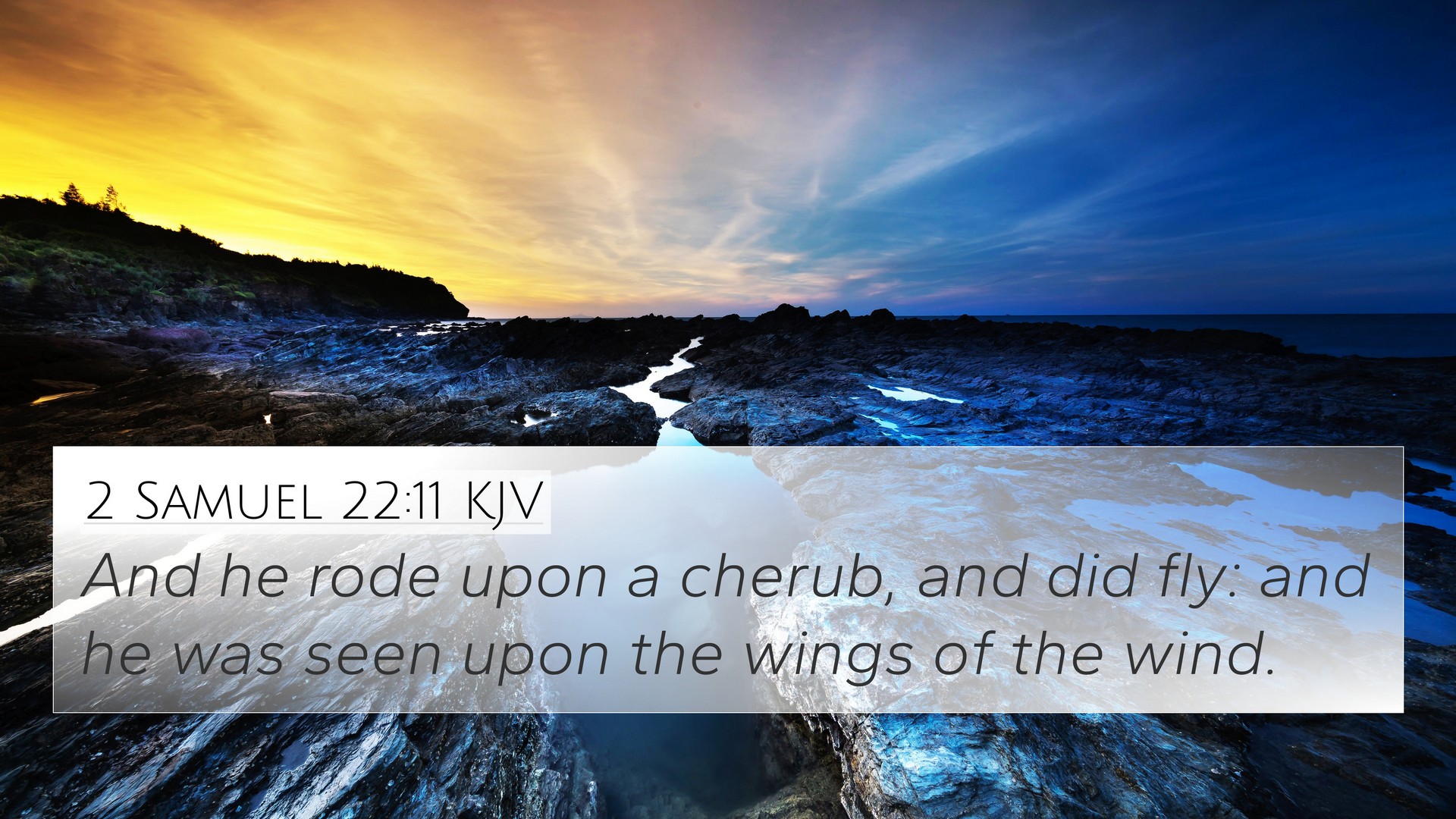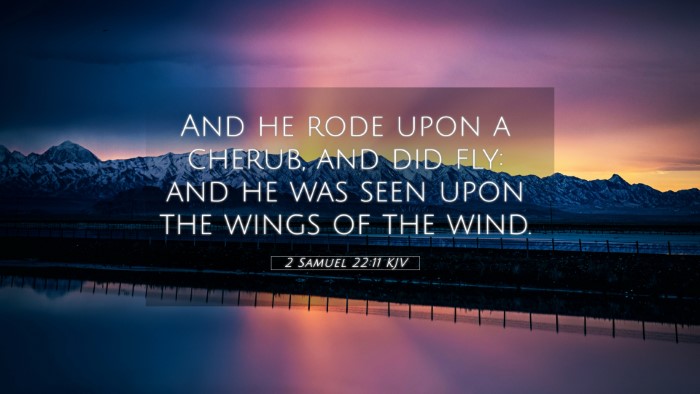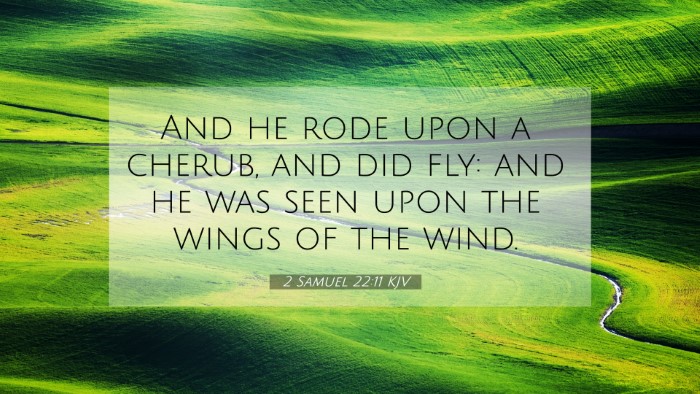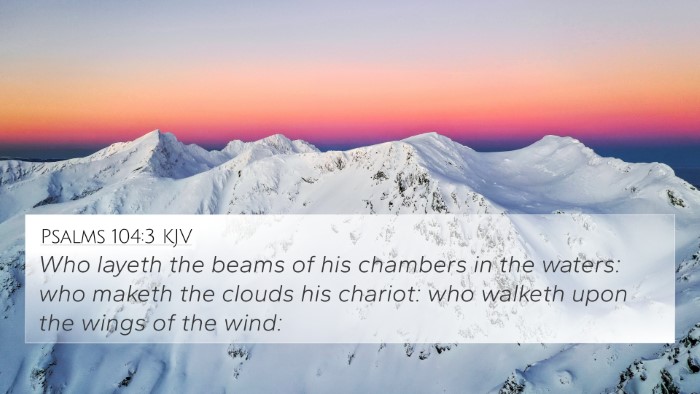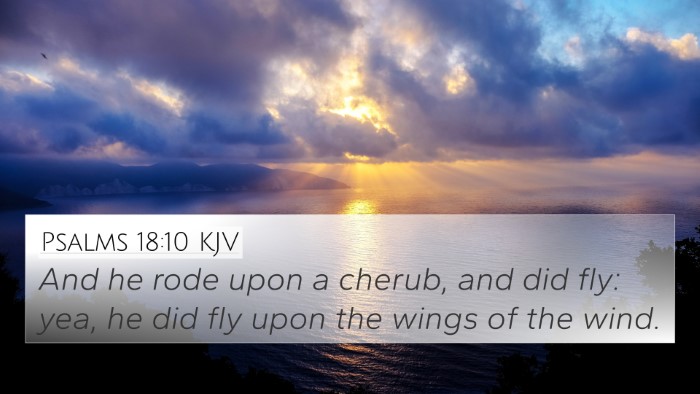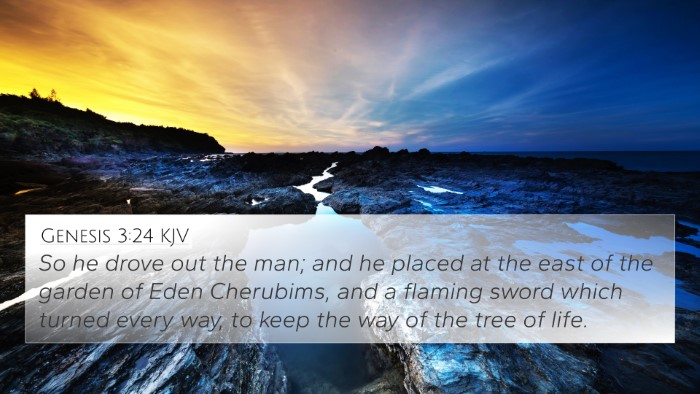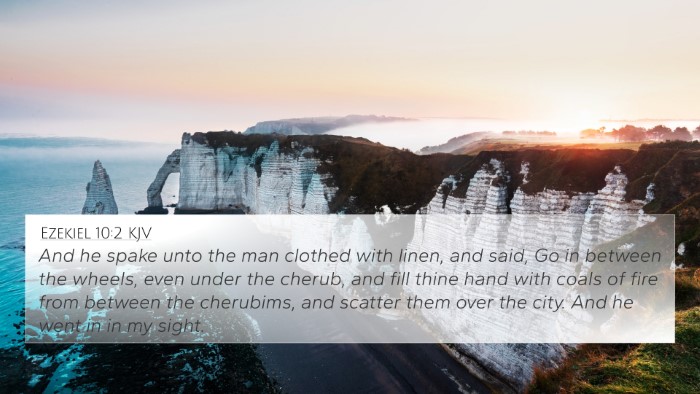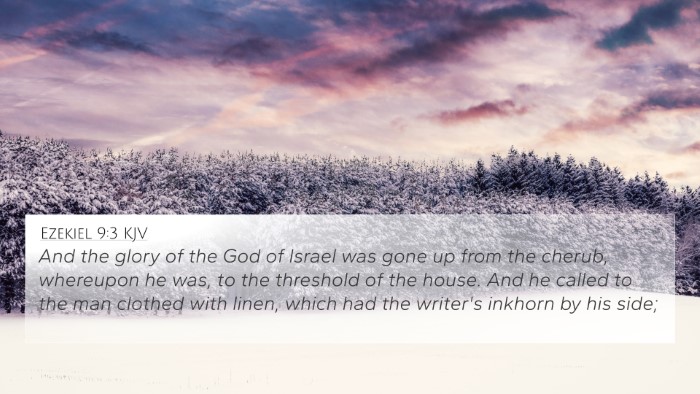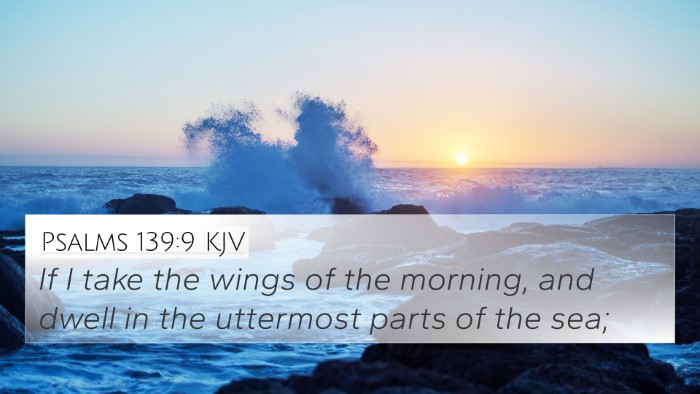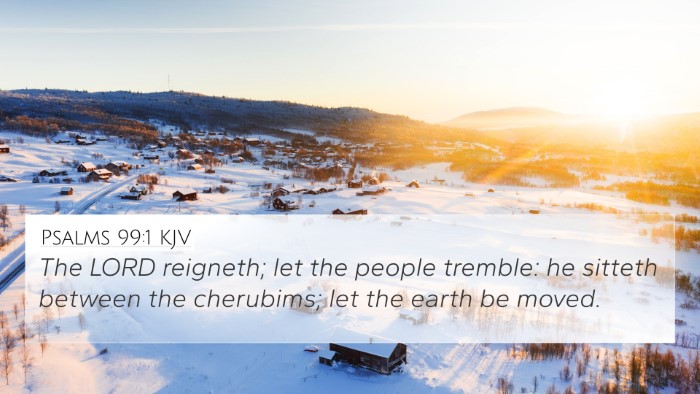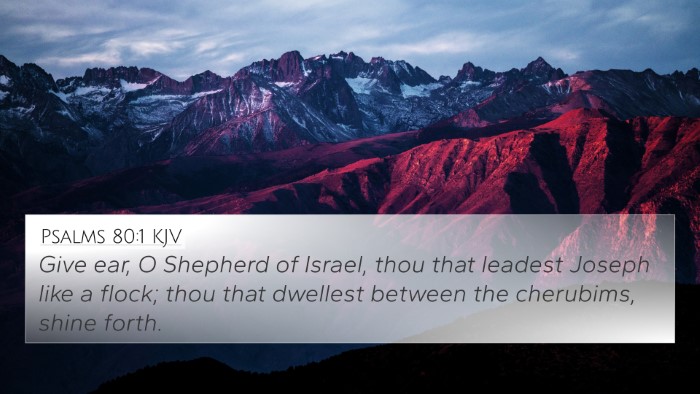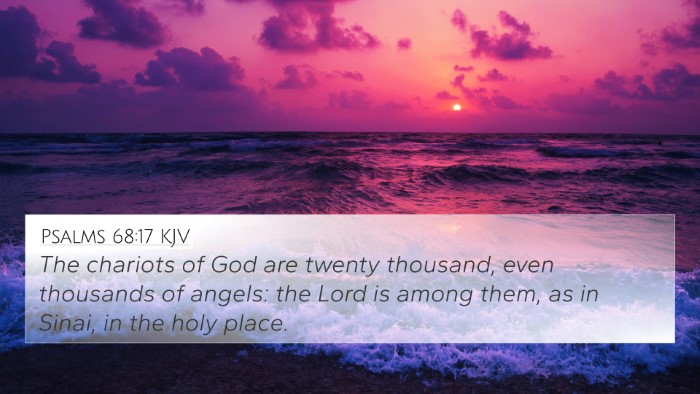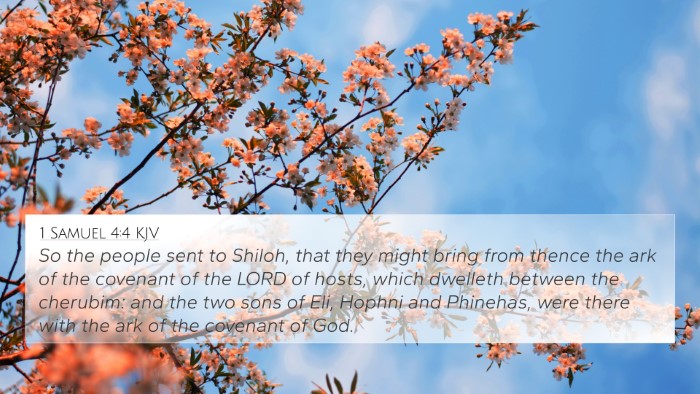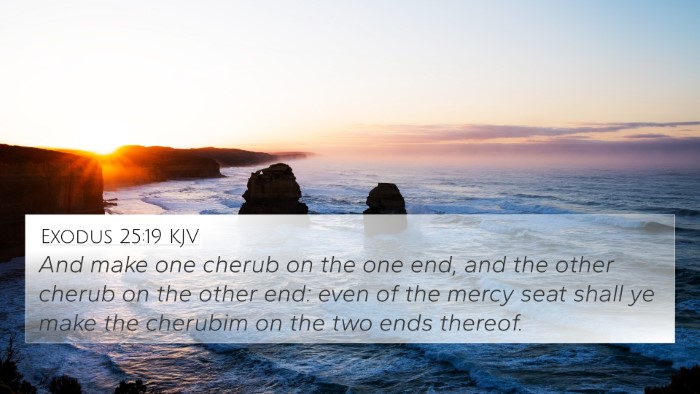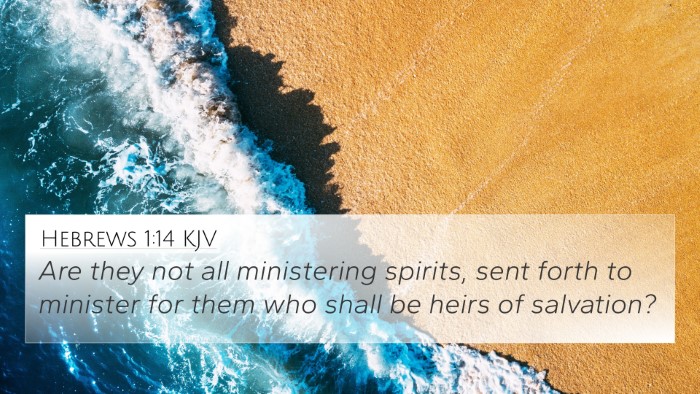Understanding 2 Samuel 22:11
2 Samuel 22:11 states: "He rode upon a cherub, and did fly: and He was seen upon the wings of the wind." This verse depicts a powerful image of God as a divine warrior, who is not distant, but actively involved in the affairs of His people. Below is a synthesized interpretation based on insights from notable public domain commentaries, including Matthew Henry, Albert Barnes, and Adam Clarke.
Verse Breakdown and Meaning
This verse is significant as it uses rich imagery to convey God's majesty and might. Each component of the verse is imbued with meaning:
- Cherub: In biblical tradition, cherubs are celestial beings often associated with divine presence and guardianship. Matthew Henry emphasizes that the use of cherubim signifies God's majesty and that He rides upon these heavenly creatures demonstrates His sovereign control over creation.
- Wings of the Wind: The phrase “wings of the wind” symbolizes speed and the unseen power of God. Barnes discusses how God's movement through the wind highlights His omnipresence and ability to transcend natural laws.
- Flying: The act of flying indicates God's ability to act swiftly and directly, which Clarke interprets as God’s readiness to assist his people in times of distress.
Thematic Connections and Cross-Referencing
This verse connects thematically with several others throughout Scripture. Below are some relevant cross-references that illustrate similar concepts:
- Psalms 18:10: "He mounted the cherubim and flew; He soared on the wings of the wind." This parallel reinforces the depiction of God as a powerful protector.
- Psalms 104:3: "He lays the beams of His chambers in the waters; He makes the clouds His chariot; He walks on the wings of the wind." This verse further emphasizes God's dominion over creation.
- Exodus 19:4: "You have seen what I did to the Egyptians, and how I bore you on eagles’ wings and brought you to myself." Here, the imagery of elevation is used to illustrate God’s salvation.
- Isaiah 19:1: "An oracle concerning Egypt: See, the LORD rides on a swift cloud and is coming to Egypt." This description poetically connects God’s intervention in human history.
- Revelation 4:8: "Each of the four living creatures had six wings and was covered with eyes all around, even under its wings." This ties back to the symbolic use of cherubim and divine beings.
- Isaiah 40:31: "But those who hope in the Lord will renew their strength. They will soar on wings like eagles; they will run and not grow weary." This verse reflects the strength that believers gain from God.
- Psalm 91:4: "He will cover you with His feathers, and under His wings you will find refuge." The theme of protection resonates strongly here.
Interpretive Insights from Commentaries
Drawing from the insights of Matthew Henry, Albert Barnes, and Adam Clarke:
- Matthew Henry: He notes that the illustration of God's presence riding on cherubim indicates His power over the forces of nature and His protection over His people.
- Albert Barnes: Barnes highlights the aspect of God’s visibility through His actions, suggesting that even in tumultuous times, God is a force of stability and strength for believers.
- Adam Clarke: Clarke advises that the imagery reveals God’s nearness and His readiness to intervene, inviting believers to trust in His power and presence in their lives.
Practical Applications
Understanding this verse encourages believers to:
- Trust in God's protection: Just as God is depicted as a mighty warrior, Christians are reminded that He is actively involved in their welfare.
- Recognize God's movement: Awareness of God's presence in their lives, especially during trials, can instill hope and resilience.
- Engage with scripture: Utilizing inter-biblical dialogue through cross-referencing can deepen understanding and enrich faith.
Conclusion
In 2 Samuel 22:11, the majestic imagery of God serves to reinforce His omnipotence and constant readiness to intervene on behalf of His people. By examining this verse and cross-referencing it with other related scriptures, we can appreciate the continuity of God's character throughout the Bible and grow in our understanding of His profound care and sovereign might.
